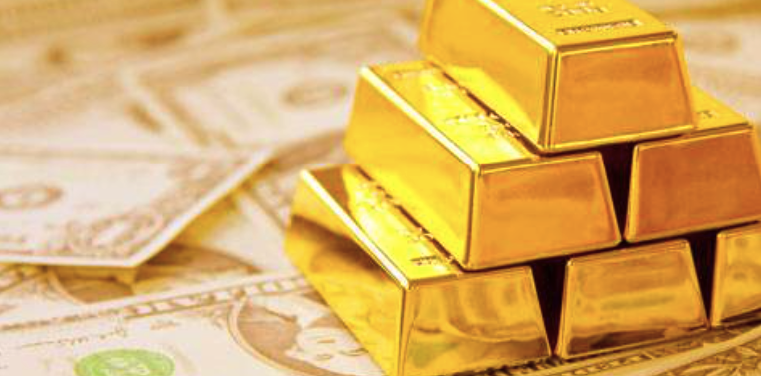
Gold Moves prices have exhibited a notable uptrend in European trade, marking a positive turn following a brief downturn from record highs. This article explores the recent movement in gold prices, particularly in the context of the dollar’s fluctuations and market expectations regarding interest rates.
Gold Prices Resuming Gains
Factors Affecting Gold Prices
Gold prices surged by 0.6% to $2178 per ounce, indicating a rebound after a two-day decline from record highs. This upward movement can be attributed to various factors, including market sentiment, economic indicators, and geopolitical developments.
Impact of the Dollar’s Decline
The recent gains in gold prices coincide with a decline in the US dollar against major currencies. Investors anticipate potential interest rate cuts by the Federal Reserve, which diminishes the appeal of the dollar, consequently bolstering demand for alternative assets like gold.
Gold Prices Movement Analysis
Recent Performance
Despite the brief pullback, gold prices have exhibited resilience in the face of market volatility. The precious metal’s ability to maintain an upward trajectory underscores its status as a safe-haven asset and a hedge against economic uncertainty.
Record Highs and Profit-Taking
Gold reached a record high of $2222 on March 21, driven by expectations of significant rate cuts by the Federal Reserve. However, profit-taking ensued, leading to a temporary dip in prices. Nonetheless, the overall bullish sentiment persists, fueled by ongoing market dynamics.
Federal Reserve’s Influence
Expectations of Interest Rate Cuts
Market participants anticipate the Federal Reserve to implement interest rate cuts, with expectations heightened following recent policy meetings. The central bank’s dovish stance reflects concerns over economic growth and inflationary pressures, prompting investors to adjust their positions accordingly.
Effects on Currency Market
The prospect of lower interest rates undermines the attractiveness of the US dollar, leading to a decline in the dollar index. This shift in currency dynamics contributes to the upward momentum in gold prices, as investors seek refuge from currency depreciation.
Dollar Index Movement
Recent Trends
The dollar index, a measure of the dollar’s performance against a basket of major currencies, experienced a modest decline from five-week highs. Market participants await further clarity on US interest rate policy, which influences trading sentiment across global markets.
Market Sentiment
Uncertainty surrounding US interest rates has created a sense of cautious optimism among investors. While expectations of rate cuts prevail, market sentiment remains susceptible to evolving economic data and central bank communications.
Prospects of US Interest Rates
Market Expectations
The prevailing consensus among market participants suggests a high probability of Fed interest rate cuts in the coming months. Projections indicate a cumulative reduction of 75 basis points throughout the year, reflecting concerns over economic growth and inflation dynamics.
Impact on Gold Prices
The anticipated dovish monetary policy stance by the Federal Reserve bodes well for gold prices. Lower interest rates diminish the opportunity cost of holding non-yielding assets like gold, thereby bolstering demand and supporting upward price movement.
SPDR Gold Holdings
Recent Data
Data from the SPDR Gold Trust indicates a marginal decline in gold holdings, signaling profit-taking among institutional investors. Despite the reduction, gold reserves remain at relatively elevated levels, reflecting sustained investor interest in the precious metal.
Implications for Market Sentiment
Fluctuations in gold holdings at major institutions provide insights into broader market sentiment. While short-term adjustments may occur, the overall bullish outlook on gold remains intact, driven by fundamental factors and geopolitical uncertainties.
Conclusion
In conclusion, gold prices have resumed their upward trajectory, buoyed by a combination of factors including dollar weakness and expectations of Fed interest rate cuts. Despite occasional profit-taking, the underlying bullish sentiment underscores gold’s appeal as a safe-haven asset amid economic uncertainty.
FAQs
- How do interest rate cuts affect gold prices? Interest rate cuts reduce the opportunity cost of holding non-yielding assets like gold, making it more attractive to investors seeking refuge from currency depreciation and inflationary pressures.
- Why is the dollar’s decline significant for gold prices? A weakening dollar enhances the relative value of gold, as it becomes cheaper for foreign investors. This inverse relationship between the dollar and gold prices contributes to upward momentum in the precious metal.
- What role does geopolitical uncertainty play in gold market dynamics? Geopolitical tensions and uncertainty often drive demand for safe-haven assets like gold, as investors seek protection against geopolitical risks and market volatility.
- How do central bank policies influence gold prices? Central bank policies, particularly regarding interest rates and monetary stimulus measures, can have a significant impact on gold prices. Dovish monetary policies tend to support higher Gold Moves prices, while hawkish policies may exert downward pressure.
- What are the key factors driving investor sentiment in the gold market? Investor sentiment in the Gold Moves market is influenced by a combination of economic indicators, geopolitical developments, currency dynamics, and central bank policies. Shifts in these factors can lead to fluctuations in gold prices and trading sentiment.
